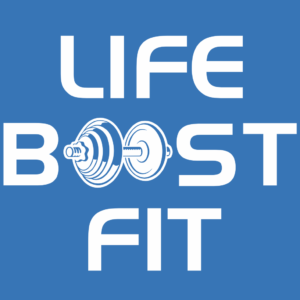Available for Interviews: Tibor Deme
Tibor Deme is a Sports & Nutrition Specialist, Elite Personal Trainer, and Habit Transformation Expert. He is also the Founder of LifeBoostFit and accompanying app.
What Tibor Deme can say in an interview about
Your Child’s Lunch: What to Pack, What to Avoid, and Why:
How children are taught to perform in school is crucial to their development, and as parents, we need to provide them with all of the necessary tools for success. One of those tools is the right nutrition to keep them focused, alert, satiated, and energized throughout the day.
1. Avoid Processed Foods. Many parents, due to the morning time crunch, don’t pack lunch for their children and instead rely on what the school provides. Unfortunately, school meals often include processed foods. By definition, processed food is any food that has been altered in some way during preparation. Cereals and cheese are processed, as are microwaved, frozen, or canned foods. Whole foods, on the other hand, are those that are either not processed at all, or processed minimally. Examples include whole grains (no-sugar-added oatmeal), legumes, fresh fruits, and vegetables. The highest nutrient value can be found in whole foods, so we want to feed our kids as many whole foods as possible.
2. Limit Sugary Foods. Packing our kids’ lunches with candy bars, processed meals, soda or sugary drinks, or sandwiches on bread that contains a high amount of added sugar should be avoided if possible. High sugar content in our kids’ food causes a spike in their blood sugar (or glucose) levels, which can lead to restlessness, lack of focus, irritability, and increased hunger. Most importantly, a high blood sugar level can decrease focus. Many of these sugary foods also include high amounts of sodium (salt), so our kids will be thirstier, too!
2. Restrict Vending Machine Use. Many parents also give kids money to purchase foods in the vending machines at school. These machines are loaded with candy and sugary drinks. As parents, we have a certain amount of control over what our kids are eating, and enabling them to consume high sugar foods will not set them up for success.
4. Consume Foods High in Complex Carbohydrates. What we’re aiming for is a nutrient-dense packed lunch that keeps kids’ blood sugar levels steady and controlled throughout the day. What we want to feed them are foods that rank low on the Glycemic Index (which you can find online) and are high in complex carbohydrates, which are the first source our body utilizes for energy. Great examples are meals filled with fruits, vegetables, and protein (plant-based is recommended). No sugar added almond milk, soymilk, coconut, or oat milk-based products are easily digestible and won’t cause sleepiness or the dreaded ‘food coma!’ The best possible foods to feed our kids will require some meal preparation and food containers (Ziploc and Glad brands make affordable, disposable ones). It can be hard to find the time sometimes, but the outcome is worth it!
The ideal packed lunch would
include some of these options
-
-
- Fruits (berries, watermelon, pear, cut apple—avoid bananas and tropical fruits as they are high in sugar)
- Prepared salads with minimally processed protein (canned tuna, ½ chicken breast, turkey slides, or other plant-based protein)
- Roasted sweet potatoes
- Roasted vegetables
- Lentil or bean-based meals (legumes)
- Nuts (pistachios, walnuts, roasted unsalted almonds)
-
Sample menu ideas!
-
-
- Hummus spread on whole-grain bread (with little to no added sugar) with cucumber, pepper, and tomato + fruit
- Spinach and egg white omelet in a sandwich wrap with fresh veggies such as carrots, cucumber, or cut peppers + fruit
- Turkey breast slices (Non-GMO, USDA approved) on whole grain bread with lettuce, cucumbers, and sprouts + fruit + 8-12 nuts
-
These kinds of foods are great for breakfast as well. Oatmeal or a healthy smoothie with plant-based protein powder (plant-based protein powder should not exceed 8-10grams preserving) bellow age 12) are quick, easy, on-the-go, and healthy options for our kids. You can even add collagen to smoothies which are great for growing cartilage, hair, and skin. Try to use no sugar added plant-based milk and berries rather than a banana. Kids can sip a smoothie on a school bus or even the car on the way to school.
The richer the variety of foods, the better for our children. As not just a nutritionist but a father, I highly emphasize a rich menu for my kids and do a significant amount of meal prep. As parents, we have the responsibility to take care of our littles ones and set them up for success. We can help them develop a healthy lifestyle even (and especially at a young age). No parent wants to see their child fall ill. So let’s get them started on the road to optimal health as soon as possible!
Interview: Tibor Deme
Tibor Deme is a Sports & Nutrition Specialist, Habit Transformation Expert, and Certified Elite Personal Trainer, is the owner of LifeBoostFit. LifeFitBoost is a program that kickstarts your healthy lifestyle by combining hand-delivered, nutrient-rich meals OR DIY Nutritional Support, coupled with an in-home or in-office Personal Training and a HabitBoost™ Mind-Strengthening Series. He also provides in-home or office nutrition and fitness services for the Los Angeles, CA area.
With Tibor’s new LifeBoostFit app, newly launching in the App Store this month, he hopes to broaden awareness of the importance of nutrition in disease prevention and quality of life. His philosophy is, ‘obesity is not a shame, it’s a symptom of an unhealthy lifestyle.’ Tibor, who has helped so many on their personal journeys towards a healthy lifestyle, often says: “It is much easier to engage in healthy living at whatever stage of life we’re in than it is to try and ‘get healthy’ when we fall ill.”
Contact:
Jo Allison
Managing Editor
Director of Public Relations
MEDIA AMBASSADORS
Success In Media, Inc.
Jo@SuccessInMedia.com

